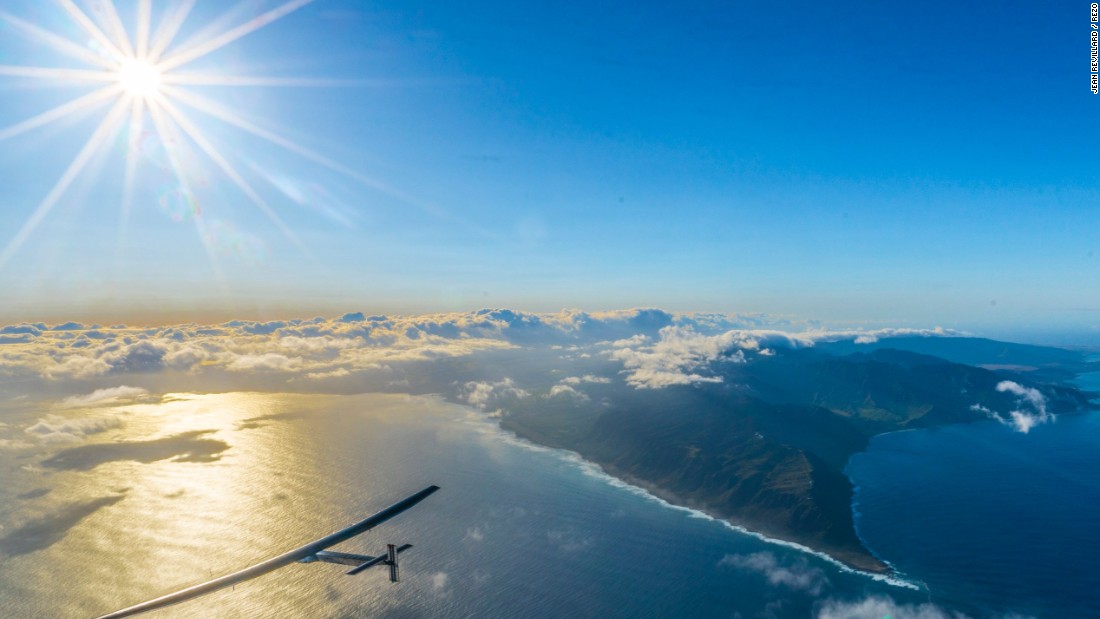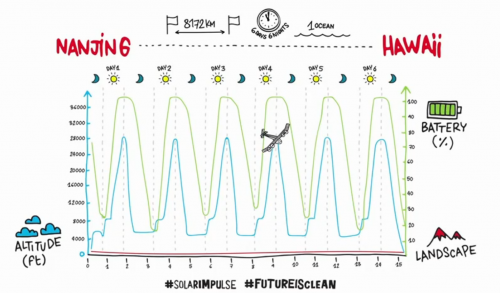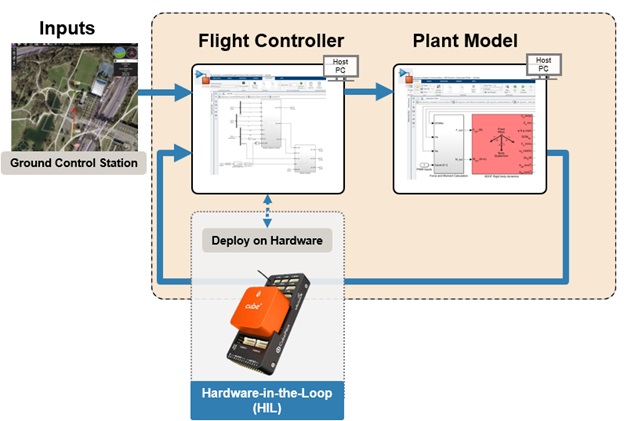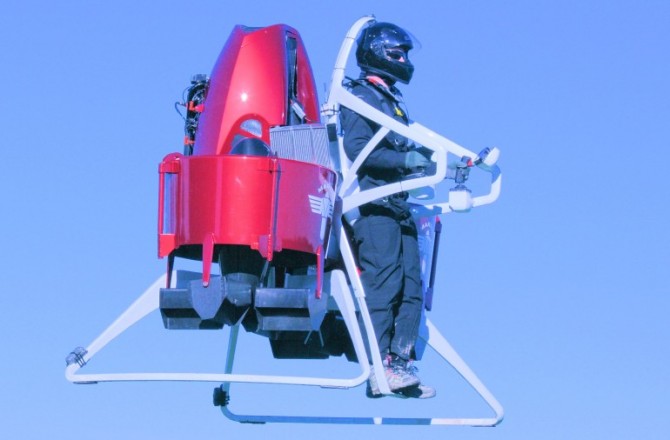How to fly a solar-powered plane when the sun doesn’t shine (and other Si2 design challenges)
Solar Impulse of Switzerland has designed a solar-powered plane to travel around the world, capable for flying through the night on stored power. Solar Impulse 2 (Si2) uses zero fuel and creates zero emissions. The plane and the pilot must be able to fly for up to 5 days and 5 nights between landings. A solar-powered plane that can fly without a drop of fuel when the sun doesn’t shine is quite an accomplishment and an engineering feat.
Si2 has just completed the Pacific crossing segment of its around-the-world flight attempt. On Monday, it departed Mountain View, CA, as it begins its trek across the U.S. So far, Solar Impulse has set 8 world records.
“The complexity of this project is incredibly high because everything in this plane is new: new propulsion, new energy, new structure, new materials,” said André Borschberg, CEO, co-founder and pilot of Solar Impulse.
Being first isn’t always easy, but it does give you flexibility in how you approach a task. For the engineers at Solar Impulse, that meant starting without a blue print and designing the plane from a clean slate with MATLAB and Model-Based Design.
Here is a list of 4 design considerations that the engineers at Solar Impulse faced that aren’t a major concern for typical aircraft designs:
1. How to design a plane with the wingspan of a 747, but the weight of an automobile
Sure, all aircraft designs must take weight into consideration: The lighter the plane, the better the fuel economy, the more cargo or passengers it can carry, etc. But this solar plane called for extreme weight and power design tradeoffs.
The team had to decide how to budget power and weight, and where to invest in redundancy. The team turned to Model-Based Design to solve these issues.
“The configuration of the Solar Impulse plane could not have been designed without the use of models and Model-Based Design,” said Ralph Paul, head of flight test and dynamics at Solar Impulse.
The design problem was a classic feedback loop between the dihedral angle of the wings, the sizing of the vertical tail section, the position and power of the engines, and other factors. The team iterated the design parameters to find the optimum compromise.
In the example below, they conducted a sensitivity study to determine which of the systems required redundancy for safe operation, the aileron servos or the rudder servos. Model-Based Design and simulation showed that the pilot could still control the heading of the plane with just 1 aileron servo if 2 rudder servos were used. This saved some of the weight and power from the overall budget.
2. The Daily Energy Cycle: The need to keep the plane aloft until the sun comes up!
It’s not possible to fly across the Pacific Ocean between the daylight hours of 10 AM and 4 PM with a maximum speed of 90 km/hour (56 mph). Si2 is not fast enough. In fact, Si2 took 62 hours and 29 minutes to complete the 2402 mile trip from Honolulu, HI to Mountain View, CA. The plane must be able to store power in order to fly around the clock.
One mechanism for energy storage is obvious: the 17,000 solar cells charge the batteries during the day. The stored energy is used to power the four 17.5 hp electric motors at night.
The second mechanism for energy storage is potential energy. Traditional planes use fuel to climb, but Si2 can increase its fuel while climbing. So the mission is designed to store energy in the form of gravitational potential energy by day.
Si2 ascends to approximately 28,000 feet during the day. At night, it reduces the demand on the batteries by decreasing power to the motors. During this part of the energy cycle, the plane to slowly descends to 8,000 feet overnight.
3. Designing an autopilot so that the pilot can sleep over the multi-day flight
Yes, other planes have autopilots. Current regulations, however, prohibit pilots from sleeping unless a copilot is awake at the time. Since there is no copilot in Si2, the team had to gain permission for the solo pilot to sleep during the 5 day flight. The Si2 pilot is permitted to sleep in 20 minute increments, preventing him from falling into a deep sleep. He sleeps a total of 4 hours per day.
Model-Based Design with Simulink was also used in the design of the autopilot system. Power and control authority were key. The model the team used for Solar Impulse 1 was reused for Si2.
“The model we started in 2007 is still used today,” said Ralph Paul. “The basic model never changed.”
It was also critical that the autopilot could wake the pilot when needed. The team uses wearables to alert the pilot if the autopilot system detects an issue. For example, a vibration in the pilot’s sleeves alerts him when the plane exceeds the maximum bank angle of 5 degrees.
4. How to catch an airplane landing in a cross wind while riding a bike (and other weather-related concerns)
As you can imagine, the weather is a key concern for solar-powered flights. Headwinds delay the flight, while good tail winds greatly help forward progress. Crosswinds can blow the lightweight plane significantly off course. The team must also consider the height of the cloud deck: The plane must climb above the clouds to adequately charge the battery reserves during the day. Si2 simply can’t fly through storms.
“We are flying so slowly, quite often we have the situation that we are actually flying backwards,” states Ralph Paul.
Si2 is light and has a low maximum speed. It travels at approximately 25 knots, or 50 km/hour. This means that strong headwinds can result in negative groundspeed. The models running in Simulink are integrated with the X-plane commercial flight simulator to create an accurate flight simulation. The flight simulator was used to explore what happens to the equipment and instrumentation when the direction and net land speed are 180 degrees out of sync.
The flight simulator was also extensively used to retrain the pilots to handle this unique aircraft, especially under various wind conditions.
“Even with years of extensive flight experience, due to the dynamics of the plane, Piccard and Borschberg had to re-learn flight tactics, piloting skills and aerodynamics virtually from scratch using a flight simulator developed specifically for Solar Impulse 2,” said Michelle DiFrangia of Solar Power World.
Wind while airborne is not the only concern. Si2 is a light-weight plane with a relatively large surface area. Crosswinds can easily push the plane off course during takeoffs and landings. So while the plane can land while pointed sideways due to the landing wheel’s ability to swivel, the plane limits the pure crosswind component to 8 knots.
The landing methodology contributes to the crosswind limitations. In order to minimize weight, Si2 has minimal under carriage. When Si2 comes in for a landing, it is actually caught by people on bikes and by additional ground crew running towards Si2 to stabilize the plane and prevent damage to the delicate landing gear and wings. Since they grasp posts suspended from the wings, the propellers are docked during landing to minimize risk to the ground crew.
The Solar Impulse cartoonist, Martin Saive, explained the importance of weather when they hit a delay in an early leg of the flight: (Yes, they have a corporate cartoonist. How cool is that?)













Comments
To leave a comment, please click here to sign in to your MathWorks Account or create a new one.